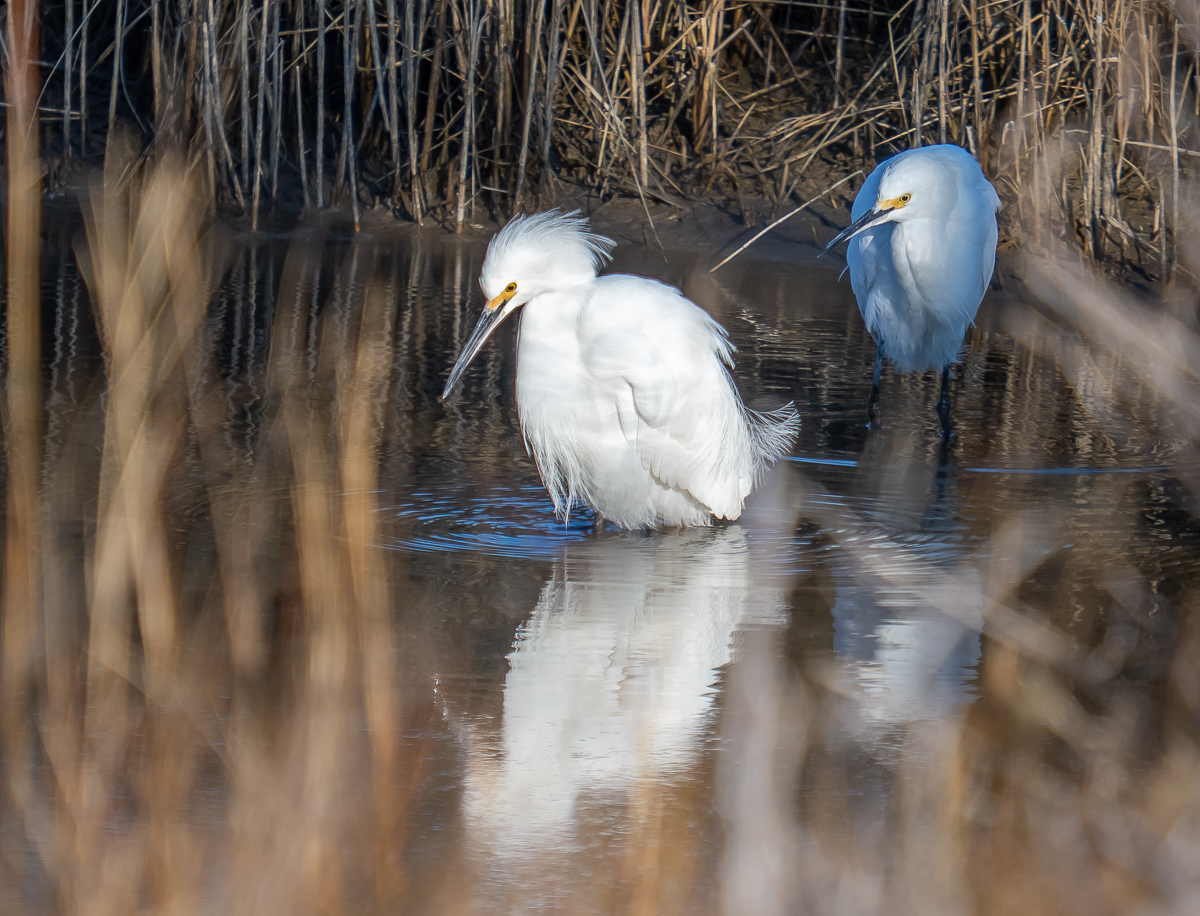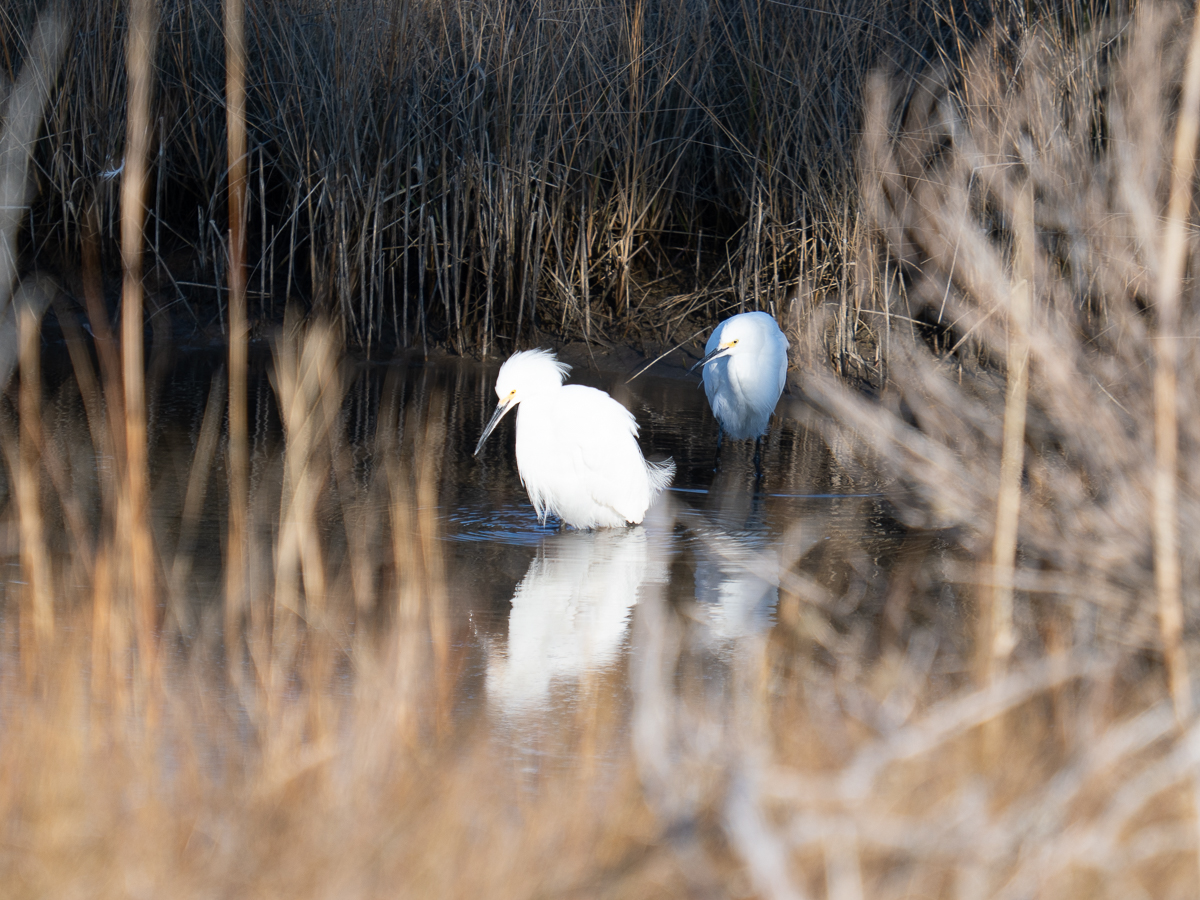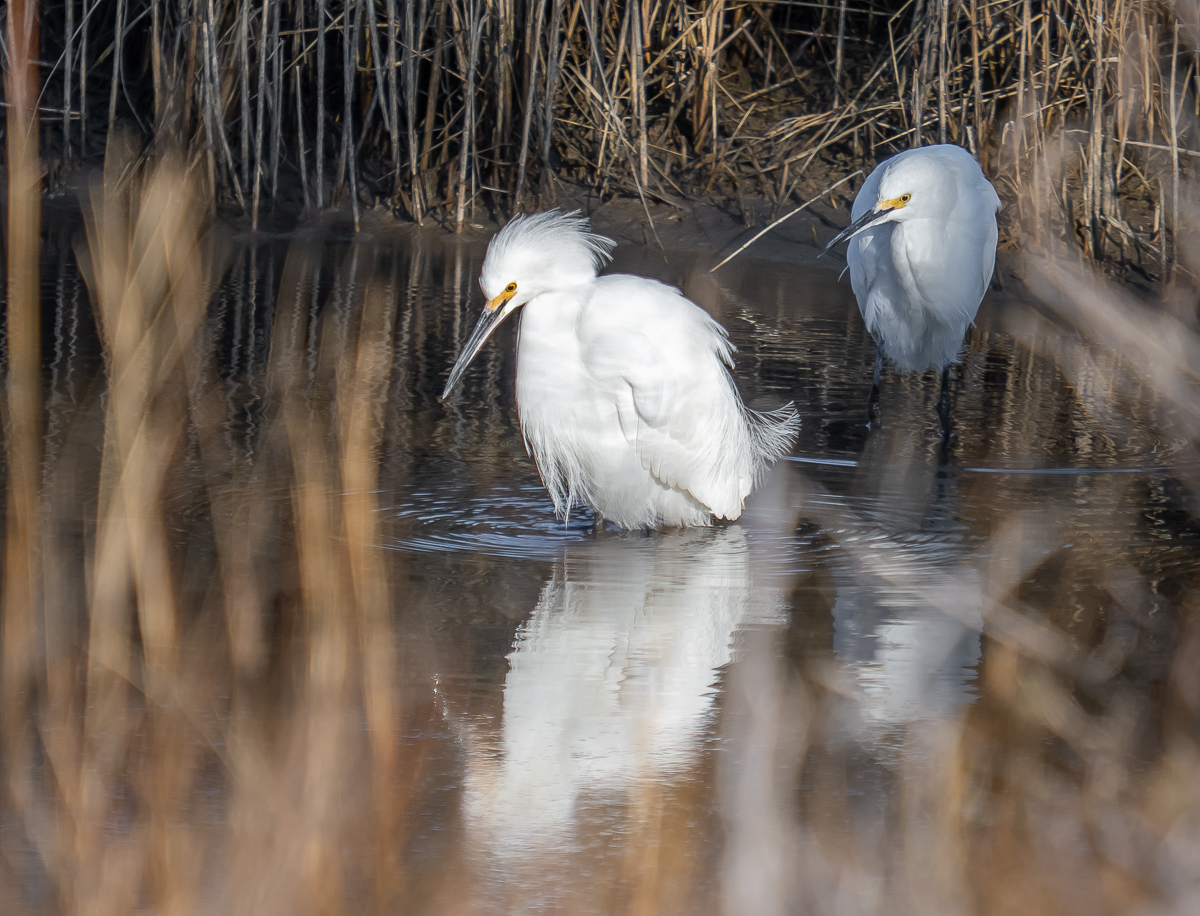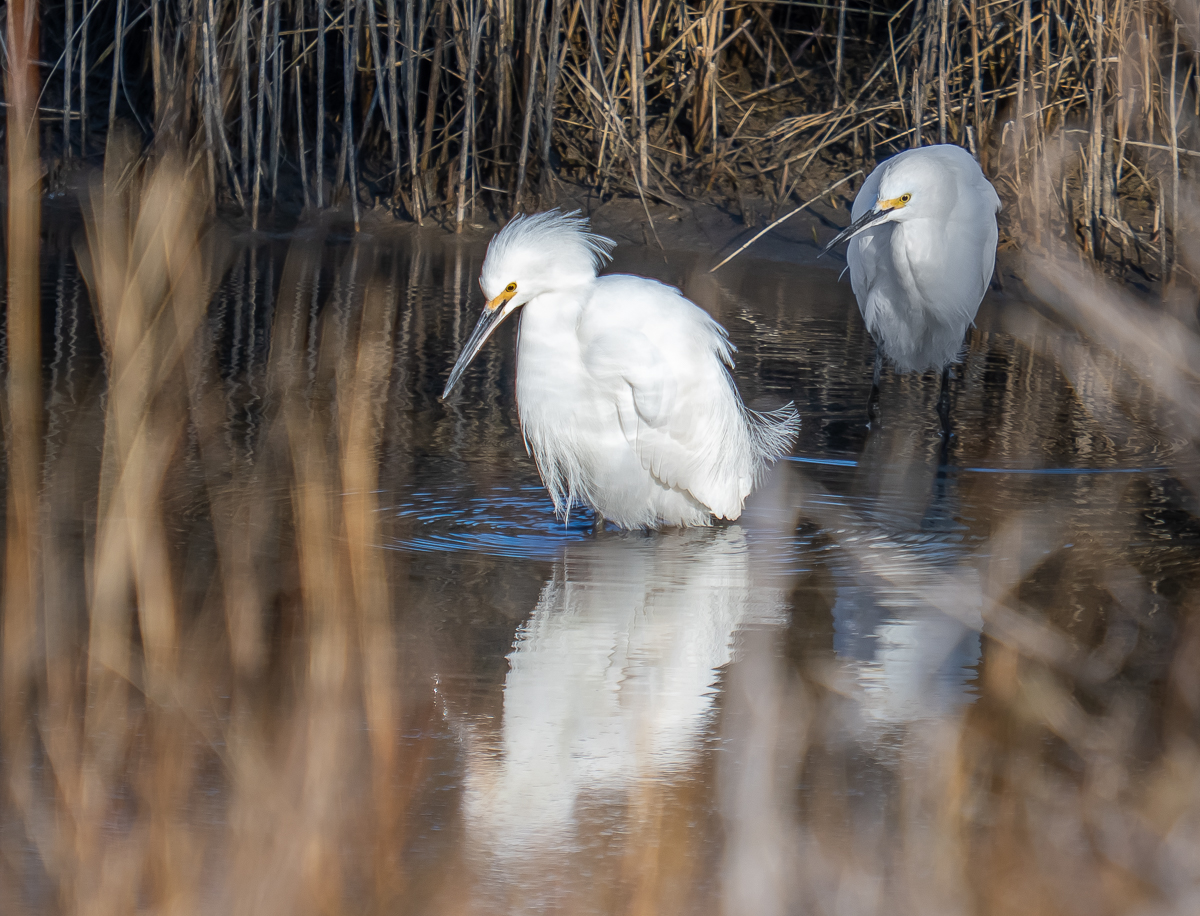Scott Ainsworth
About the Image(s)
OM System OM-1 Mark II with M.Zuiko 40-150mm f/2.8 + MC-20
ISO 250 (auto), aperture priority, 1/500, f/5.6, back-button AF
WB as-shot (temp 4650, tine +14), Lightroom Classic 14.4
While the January sun was still low in the East, these two Snowy Egrets were foraging for breakfast in an isolated tidal pool. The pool was nearly completely surrounded by last year’s reeds, which provided cover for the egrets and helped this photographer’s stealthy approach. However, they also left just an 24-inch (0.6 meter) gap through which to shoot. The sun was directly behind, lighting the closest egret, while the reeds cast shadows on the rest of the scene. With this image, I tried to capture the focus of the lead egret, the apparent curiosity of the second egret, and with the sense of isolation and protection provided by the nearly hidden little pool.
Processing this image required many steps and much experimentation to balance the brights from the direct sun and shade cast by the reeds. I started with Lightroom’s “auto” development, which slightly reduced exposure and significantly reduced highlights and blacks. This brought out detail in the egrets and reduced the brightness of the foreground reeds, but completely crushed the dark areas. I raised blacks to bring the dark areas back in range. The egrets were still too bright and lacking detail, so I cropped to help focus follow-on adjustments. Reducing whites and highlights improved the image, even bringing out the reflections on the lead egret caused by the tiny waves on the pool surface.
At this point, the egrets looked pretty good, but the foreground reeds were still distractingly bright. Gradients allowed selective brightness reduction. For the left-side reeds a radial gradient, centered on the lower-left corner, addressed the left side reeds. Similarly, a linear gradient was used to reduce brightness on the right. A final crop helps bring attention to the egret and their reflections.
5 comments posted
In this photo (and others I took from the same angle around the same time), I think the blue on the second egret is from shade, and the blue on the water is reflected sky--the sky was mostly clear the day this was taken.
When I shift the white balance to shade (4,300, +8) in Lightroom, the second egret is much closer to gray, but the reeds change to almost orange (they are mostly straw-gray in January). Shifting the white balance to daylight (5,500, +10) yields less blue, but again the reeds turn orange. If it were Golden Hour, this might be realistic, but these photos were taken 2 hours after sunrise.
While writing this email, I experimented with masking the gray parts of the second egret and adjusting the WB. This seems like it has promise, but without access to the Color Mixer (which not available for Lightroom masks), it is beyond my Lightroom talent.
I had more success reducing the blue saturation using Color Mixer (-50) for the entire image, but this also removed the pretty blue reflection on the water (image attached). Posted: 10/04/2025 23:05:35
Your subject is obviously the centered egret with the reflection, but the rear bird pulls my eye away from the subject. Also, I find the out-of-focus reeds cutting across the frame intrusive and weaken the image's impact. Yes, they add environment, but here they distract more than they contribute. And the out of focus reeds on the left are a major distraction taking away from the spectacular light you captured. Lastly, and this happens to me all the time when I have two of the same species in an image, i.e., the spacing is awkward-close enough that they're linked, but no symmetry or dynamic tension. In any event, a technically solid capture of two elegant birds with fabulous light.
I really can't comment on the "blue bird" but I've seen this before and just assumed it goes with the territory and really don't know how to eliminate it; but to tell the truth, instead of eliminating I rather enjoy it :-)
Posted: 10/04/2025 22:50:12
I really like the interaction between the two egrets and believe it helps tell a story. Watching them, I wondered if the second egret was young and learning from their senior. I tried to hint at this in the image. Perhaps a different crop would help?
Thoughts? Posted: 10/04/2025 22:58:00



